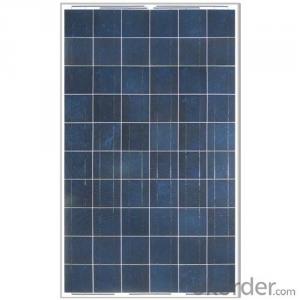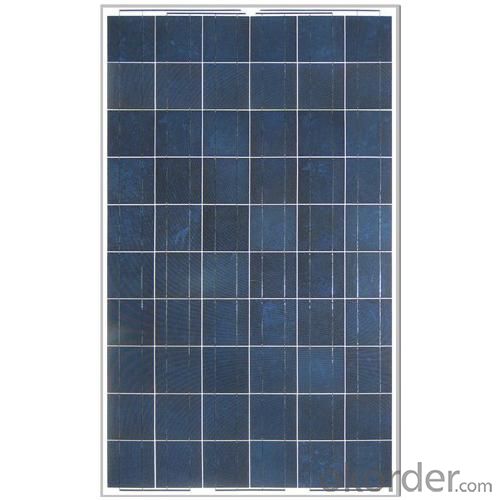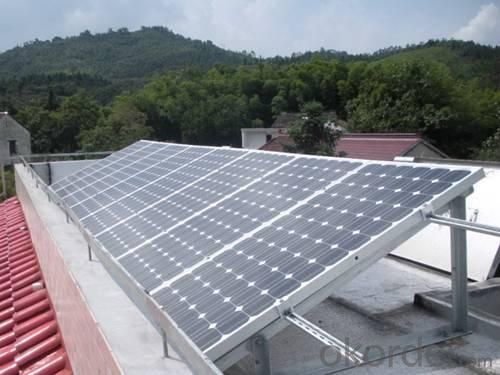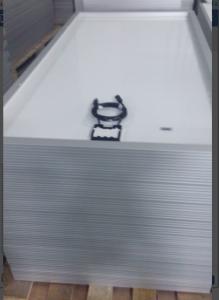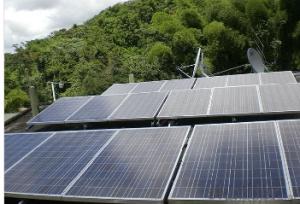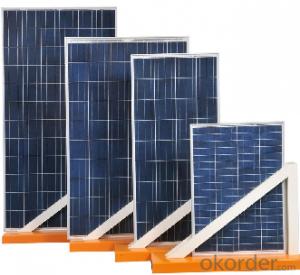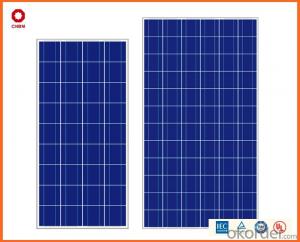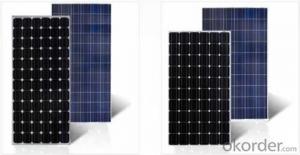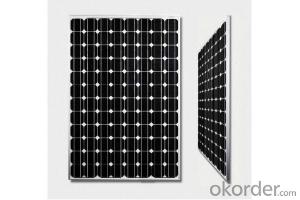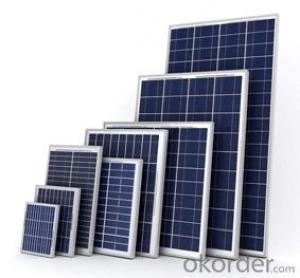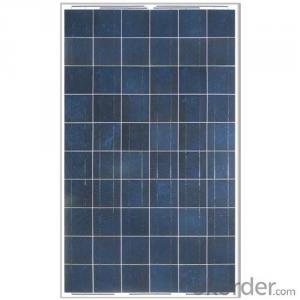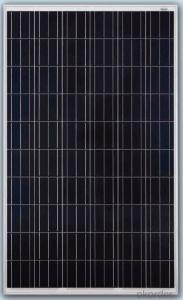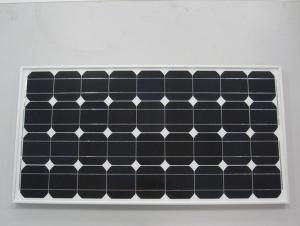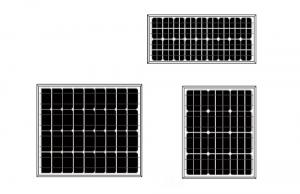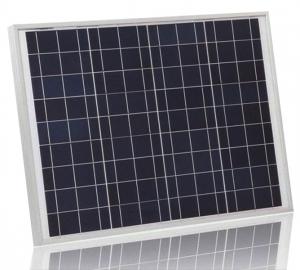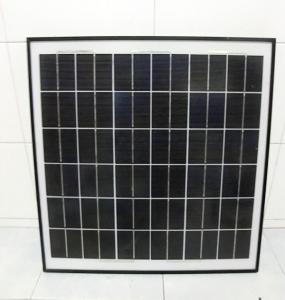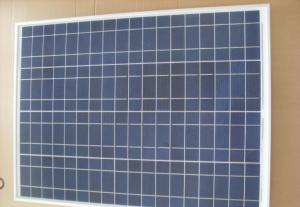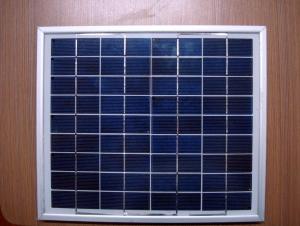Poly 250W Solar Panel CE/IEC/TUV/UL Certificate - Solar Panels Greensboro NC
- Loading Port:
- Shanghai
- Payment Terms:
- TT OR LC
- Min Order Qty:
- 1000 watt
- Supply Capability:
- 100000000 watt/month
OKorder Service Pledge
OKorder Financial Service
You Might Also Like
Quality and Safety Poly 250W Solar Panel
1. Rigorous quality control meets the highest international standards.
2. High-transmissivity low-iron tempered glass, strong aluminium frame.
3. Using UV-resistant silicon.
4. IS09001/14001/CE/TUV/UL
Warranties Poly 250W Solar Panel
1. 10 years limited product warranty
2. 15 years at 90% of the minimal rated power output
3. 25 years at 80% of the minimal rated power output
Technical date Poly 250W Solar Panel:
ITEM NO.: | Poly 156*156 cell ,60pcs . Power range from 230Wp-260Wp | ||||||
Maximum Power(W) | 230 | 235 | 240 | 245 | 250 | 255 | 260 |
Optimum Power Voltage(Vmp) | 29.4 | 29.5 | 29.7 | 30.1 | 30.3 | 30.5 | 30.7 |
Optimum Operatige Current(Imp) | 7.83 | 7.97 | 8.08 | 8.14 | 8.25 | 8.37 | 8.48 |
Open Circuit Voltage(Voc) | 36.7 | 36.8 | 36.9 | 37.1 | 37.3 | 37.5 | 37.7 |
Short Circuit Current(Isc) | 8.52 | 8.59 | 8.62 | 8.65 | 8.69 | 8.73 | 8.78 |
Solar Cell: | 156*156 Poly | ||||||
Number of Cell(pcs) | 6*10 | ||||||
Brand Name of Solar Cells | JA Cell, Bluesun Cell | ||||||
Size of Module(mm) | 1650*992*40/45/50 | ||||||
Cable & Connector Type | Pass the TUV Certificate | ||||||
Frame(Material Corners,etc.) | Aluminium-alloy | ||||||
Back sheet | TPT | ||||||
Weight Per Piece(KG) | 19.5KG | ||||||
FF (%) | 70-76% | ||||||
Junction Box Type | Pass the TUV Certificate | ||||||
Tolerance Wattage(e.g.+/-5%) | ±3%, or 0-3% | ||||||
Front Glass Thickness(mm) | 3.2 | ||||||
Temperature Coefficients of Isc(%) | +0.04 | ||||||
Temperature Coefficients of Voc(%) | -0.38 | ||||||
Temperature Coefficients of Pm(%) | -0.47 | ||||||
Temperature Coefficients of Im(%) | +0.04 | ||||||
Temperature Coefficients of Vm(%) | -0.38 | ||||||
Temperature Range | -40°C to +85°C | ||||||
Surface Maximum Load Capacity | 5400Pa | ||||||
Allowable Hail Load | 23m/s ,7.53g | ||||||
Bypass Diode Rating(A) | 12 | ||||||
Warranty | 90% of 10 years, 80% of 25 years. | ||||||
Standard Test Conditions | AM1.5 1000W/ 25 +/-2°C | ||||||
Packing | carton or pallet | ||||||
1*20' | 14 Pallets / 316pcs | ||||||
1*40'STD | 25 Pallets / 700pcs | ||||||
Diagram

Standard production line of Factory

Packaging
u Normally packing: 1pc/2pcs/3pcs/10pcs/25pcs per carton
u Individual packing requirement is acceptable.
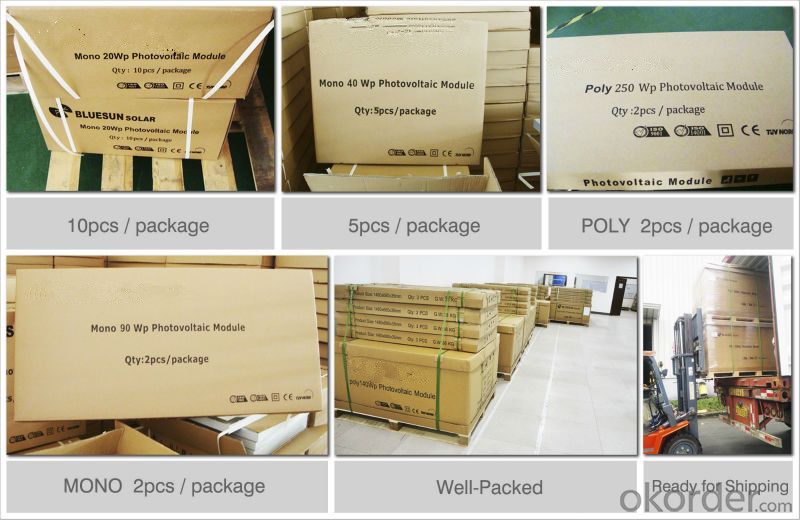
Shipping Poly 250W Solar Panel
By Sea | Delivery from Shanghai or Ningbo seaport |
By Air | Departure from Shanghai Pudong Airport |
By Express | Post by DHL, EMS, UPS, TNT. |
FAQ Poly 250W Solar Panel
(1) Can you offer the test report of the module?
Sure. All the solar modules must pass necessary tests including EL test and ultra-red test and other visual test of the apperance, and the test report presents all the detailed data of the modules.
(2) How to confirm about the quantity and the type of solar module?
It depends on the solar system where you want to put into use the solar modules. We have experienced engineers to design for your order and you need to give more information to fix the details.
- Q: How much money can you save by using solar panels?
- The amount of money you can save by using solar panels depends on various factors such as the size of your solar system, your energy usage, location, and the cost of electricity in your area. On average, homeowners can save anywhere from a few hundred dollars to several thousand dollars annually. It's recommended to consult with a solar professional to get a personalized estimate based on your specific circumstances.
- Q: ASAP :) as much details as possible
- sounds like a homework essay question to me
- Q: Can solar panels be installed on a garage or carport?
- Yes, solar panels can be installed on a garage or carport. These structures often provide ample space and a suitable angle for solar panel installation, allowing homeowners to generate clean and renewable energy while utilizing the available space efficiently. Installing solar panels on a garage or carport can also provide additional benefits such as shade for vehicles, reduced utility bills, and the opportunity to contribute to a greener environment.
- Q: We want make solar panel for our home use. but we have no any right idea how we can make it. we want to make it with cheap prices.we also want to know the proper size of solar panel.where we can take help about making a solar panel
- Create okorder
- Q: Can anyone give me a link to a website that sells really big solar panels? Enough to run a small cafe on entirely solar power.
- I think you may be surprised how much energy a little cafe like that uses. Since the air conditioning, refrigerators, and other appliances are going nonstop, I'd expect the energy usage to be several times that of a normal house. If you have access to the electric bills of the cafe while it was in operation, look up the kWh's used per month. For scale, I will say that our house uses 500 kWh per month, and needs 3 kW of panels to keep up with that. Scale up to match the restaurant, as a ballpark estimate. If you don't have access to the electric bills, then go visit a similar cafe in town, or a nearby town, and ask them how much their electric bill is. If the ballpark estimate still looks doable to you, then contact a professional solar installer to get an accurate, no-obligation estimate. Most likely, the cafe will use gas heat for cooking. But if not, electricity from solar panels is probably the most inefficient way to cook. Consider having solar ovens for most of the cooking, if you have land, with gas as a backup on cloudy days.
- Q: I am looking to get some solar panels for my home to just power a few lights, a fan or two. I have a generator but I want that only to power the fridge and maybe some other small stuff for convenience.But mainly want the solar panels for the lights and fans. Any one have an idea of how about I go to figuring this all out? Should I call a contractor or anything?
- depends on what light bulbs you have in watts.depends on how many you want on. for the power equation you take P which equals watts x I which equals amps and E which equals volts and you multiply the amps and the volts together to get the watts which the solar panel is generating. for example if you had 7 60 watt light bulbs you would need 420 watts generated. which if you got 50 watt panels each you would need 9 panels. and for what your talking about if you want the stuff to work when the power goes out you are going to need an inverter. not to be confused with a grid ti inverter. and a few batteries i recommend deep cycle batteries that are meant for solar panels. depends on what fan you have.
- Q: I would like to know how do you build a solar panel?
- There are several types of solar panels. If you mean photovoltaic panels for generating electricity, that is a really advanced project that few amateurs are equipped to do. In the long run, it will be a lot cheaper and easier to buy factory made PV panels. You can try building one by sandwiching an array of photovoltaic cells between a sheet of glass or plexiglass and a sheet of aluminum. Remember that this assembly must be able to withstand great heat, and it must be sealed to make absolutely sure it does not leak. So basically, you need to lay out the PV cells and wire them together to get the desired voltage and current, with some arrangement to allow the wires to extend outside without leaking. Then you enclose the panel around all four edges with aluminum channel and seal with silicone sealer. Lay it on thick and test thoroughly with water hoses to eliminate all leaks. As mentioned, it's easier and cheaper to buy them factory made. If you mean a heat collector for a solar house heating system or hot water system, that is just a matter of building a thin, flat aluminum box with a glass lid. For hot air, you just need to circulate the air through the box when the sun is shining. For water, you need to have some arrangement to pass the water through the compartment in thin walled metal tubing. You won't be surprised when I say it's cheaper to buy one factory made. Good luck.
- Q: Can solar panels be installed in areas with high levels of air pollution?
- Yes, solar panels can be installed in areas with high levels of air pollution. While air pollution may slightly reduce the efficiency of solar panels by blocking sunlight, they can still generate electricity even in polluted environments. Regular maintenance and cleaning of the panels can help mitigate any potential impact on their performance. Additionally, solar energy remains a sustainable and environmentally friendly option, regardless of air pollution levels.
- Q: Dear Friends, I am very much worried about Global warming, So to contribute something for reducing Global Warming I have decided to use Solar Panels. Can anybody tell me what is the price of these Solar Panels and why people are not using them when they are environment friendly. What are the Pros and Cons of these Solar Panels?
- Solar panels are not environmentally friendly. They are expensive and inefficient. Dangerous chemicals that never break down in the environment are produced in the manufacture of solar panels. Their environmental footprint is larger on a per kilowatt basis, than conventional modes of electricity generation. And, because of their unreliability, they have to be backed up by conventional sources. Well-intentioned, but gullible, people the world over have convinced themselves that solar power is our salvation. Nothing could be further from the truth. As an example, check out Margaret Wente's recent column in the Globe Mail after Ontario's recent decision to go green. Also check out George Monbiot's critique of the UK experiment.
- Q: Okay, so I have a science fair coming up soon and I need help with my project. SO - What should I use to demonstrate with the propeller? A toy boat? Plane? And I only have mini solar panels ; so how do I put the solar panels on the toy boat/plane to make the propeller move off of the sun's energy? Thanks. Steps please!
- Solar panels produce electricity. To move the propeller you need mechanical motion. An Electric motor converts from electrical to mechanical power. Most Solar Panels produce DC electricity as do batteries so you need a DC motor that is sized to match the Output of your solar panels. For small temporary projects like this I find that hot melt glue is great to assemble parts. Using a voltage meter you can expose your solar panels to a strong light (or one equal to what you expect during your demonstration) and measure the voltage across the terminals. This may help to size the motor. It depends upon the size of your propeller and how it is made. Your three choices are to use it to power an airplane, to power a boat underwater or to power a boat like an air boat. You might also use the air boat concept to make a car. (air car) The air boat might be the simplest to make but you will need a body of water to demonstrate the concept. The air car doesn't have such a requirement.
Send your message to us
Poly 250W Solar Panel CE/IEC/TUV/UL Certificate - Solar Panels Greensboro NC
- Loading Port:
- Shanghai
- Payment Terms:
- TT OR LC
- Min Order Qty:
- 1000 watt
- Supply Capability:
- 100000000 watt/month
OKorder Service Pledge
OKorder Financial Service
Similar products
Hot products
Hot Searches
Related keywords
